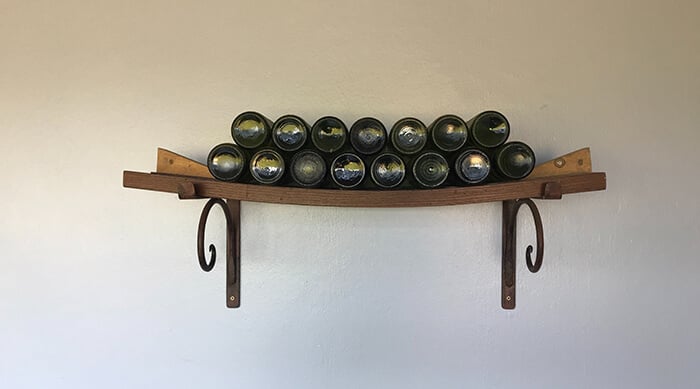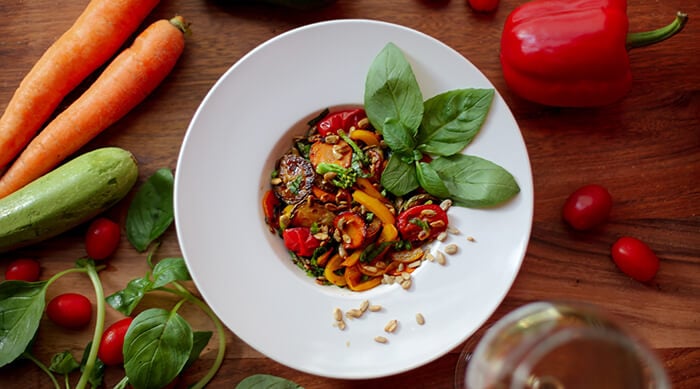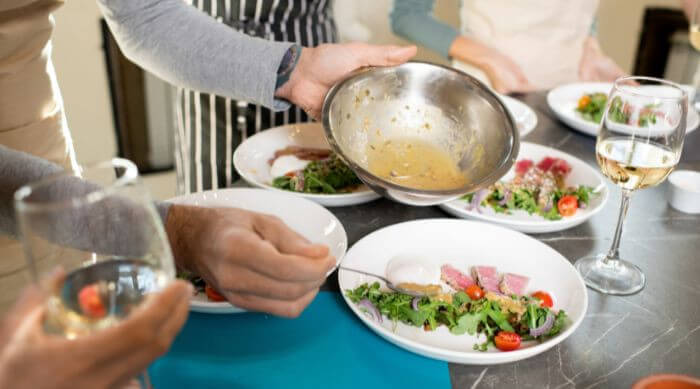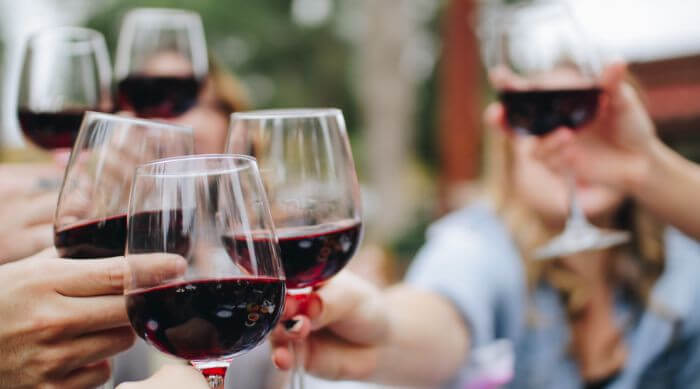Don’t have a wine cellar on hand? No problem! We cover several storage tips for keeping your wine fresh at home without any fancy equipment.
What is the proper way to store wine? The proper way to store wine is horizontally, in a cool, dark place (around 55ºF/13 C) with few temperature fluctuations, and in a spot with average humidity.
If you know your wine basics, you know light and temperature are the key elements to keep wine tasting its best for up to a few years. If you’re looking to hold onto your wine for a while, it’s best to buy a high-quality wine. Balanced red wines with a moderate level of acidity and tannins are usually best.
How long can you store wine? If you store them right and don't open them, white wines (like a sauvignon blanc) or sparkling wine can usually last for 1-2 years more than their 'drink by' date. Red wines can last 2-3 years longer, and cooking wines can be stored for an extra 3-5 years. Very good quality wines can stay fresh for many, many years, even decades.
Unopened champagne will last 3-4 years if it’s non-vintage or 5-10 years if it is a vintage.
The wine aging process can be tedious, but completely worth it. Let’s talk about the top 5 things you need to know about keeping wine fresh.
Our non-alcoholic pinot noir is great for red wine fans. If you’re not sure where to start, take our wine quiz. We’ll match you with the perfect wine for your palate!
Table of Contents
1. The Proper Temperature for Storing Wine
2. Horizontally Store Wine Bottles
3. Light, Vibration, and Their Effects On Your Wine
4. Proper Humidity for Storing Wine
1. The Proper Temperature for Storing Wine
The optimal temperature for both long-term and short-term wine storage is approximately 55ºF (13ºC).
Wine preservation has many factors, and wine storage temperature plays a crucial role in preserving the quality of stored wine. It can spoil easily in overly hot or overly cold temperatures.
Wine should never be stored below 25 °F (-4ºC) to prevent freezing, or above 68°F (20°C) to prevent rapid aging and damage to volatile compounds. Room temperature is too warm.
Maintaining a stable temperature is equally important, as frequent fluctuations may cause the cork to expand and contract and lead to wine leakage or air intrusion.
Keep your wine out of direct sunlight so it stays at the right temperature and doesn’t spoil.
2. Horizontally Store Wine Bottles
Place corked wine bottles on their sides in a wine rack. This keeps the cork wet, which is important to keep the wine fresh for longer. If the cork dries out, the wine might leak and get old too fast.
While you don't have to lay bottles with screw tops sideways, it can save space and make it easier to reach your wines.
Is it okay to store your wine upright? Try to never store wine upright. If you have to, do it for a very short amount of time.
3. Light, Vibration, and Their Effects On Your Wine
Always store your wine in a dark place, no matter how long you're keeping it. UV rays from sunlight can harm the taste and smell of the wine.
Shaking can mix up the sediment settled at the bottom of the wine bottle, so keep it away from speakers, washers, and other things that vibrate.
For long-term storage, your best bet is to leave your fine wine in a designated space away from any other storage space.
4. Proper Humidity for Storing Wine
Keep the humidity levels in your wine storage around 60%.
Humidity levels in the air can affect how long your wine collection lasts. If the air is too dry, the cork can dry out and let air in, spoiling the wine. If it's too wet, the labels might come off the bottles, making them hard to show or sell.
For context, many wine coolers offer humidity ranges between 55-85%.
5. Invest in a Wine Fridge
If you are a sommelier, avid wine drinker, or a collector of fine wines, a wine fridge (also known as a wine cooler) is the best way to keep your wine fresh.
Wine coolers differ from a standard refrigerator in that they are consistently cool, dark, and moist, and stay at a consistent temperature between 50-60˚F (10-15˚C). A wine refrigerator also prevents cross contamination from food odors.
If you are just beginning to develop your wine preferences and only have a bottle or two at a time, don’t worry about buying that wine fridge just yet.
How To Store Open Bottles of Wine
An opened bottle of wine, if properly stored, can remain good for 3-5 days (yes, wine can go bad). Resealing the bottlequickly will help it retain its original taste and extend its lifespan.
For leftover wine, wrap the cork in wax paper and then push it back into the bottle. The wax paper facilitates the reinsertion of the cork and prevents pieces of cork from dropping into the wine.
If the original cork is lost or damaged, a rubber wine stopper can serve as an effective substitute. Additionally, a wine vacuum pump, which removes air to create a near airtight seal, is another excellent option for sealing an open wine bottle.
Serving Wine
The proper serving temperature for wine ensures full expression of aroma and flavor.
Red wine is best served slightly cooler than room temperature, the ideal temperature being between 58 and 65˚F (or 12-19˚C). The specific temperature can depend on the wine's age, with mature wines favoring temperatures around 61-65˚F and newer wines benefiting from a cooler range.
Heavier, tannin-rich reds should be a bit warmer than lighter reds, which can be served as cool as 55˚F.
White wines should be served at colder temperatures than reds, but not so cold as to inhibit their aromas. The ideal range for white wine is 45-55˚F (or 8-12˚C). White sparkling wines and sweet white wines are best at the cooler end of this range.
Champagne should be the chilliest, served at temperatures between 38-45˚F (or 5-8˚C).
Do you love wine, but not alcohol?
Try Surely! All of our wines are alcohol free and taste just as good (probably better!) Forget those pesky hangovers; it’s time to try something new.




